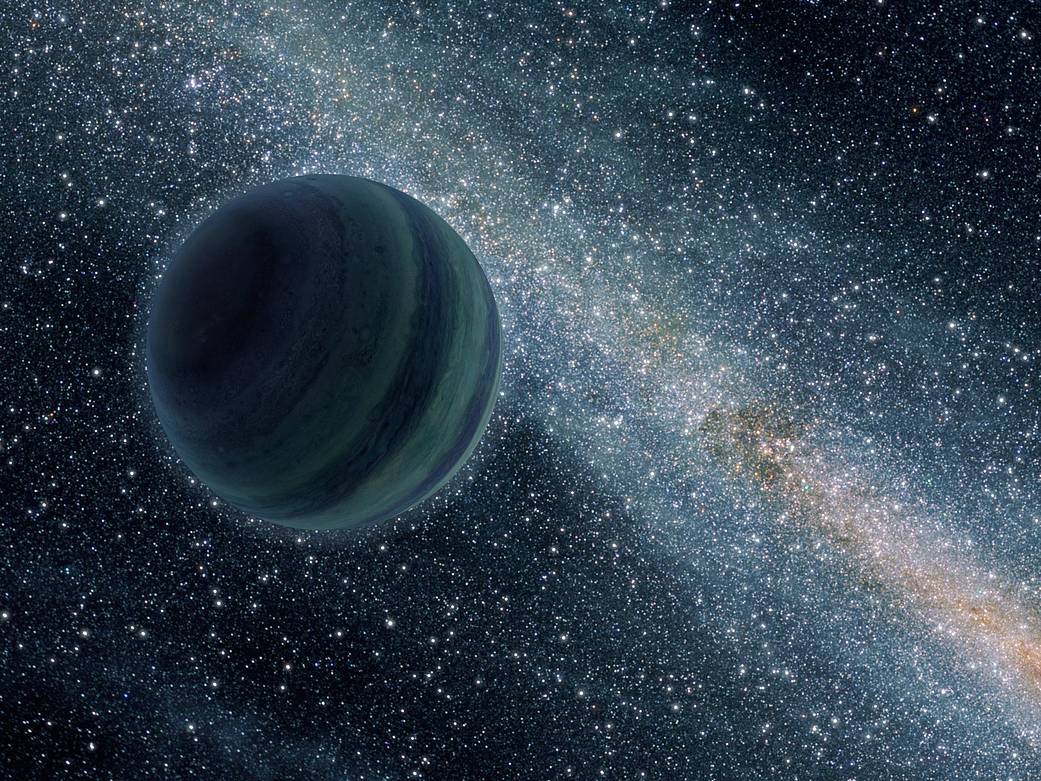This artist’s conception illustrates a Jupiter-like planet alone in the dark of space, floating freely without a parent star.
这幅艺术家的构思图说明了一颗类似木星的行星在黑暗的太空中独自游荡,没有母星。
Exoplanet hunters have found thousands of planets, most orbiting close to their host stars, but relatively few alien worlds have been detected that float freely through the galaxy as so-called rogue planets, not bound to any star. Many astronomers believe that these planets are more common than we know, but that our planet-finding techniques haven’t been up to the task of locating them.
系外行星猎人已经发现了数以千计的行星,大多数都在靠近其母星的轨道上运行,但相对而言,很少有外星世界被发现,它们作为所谓的流氓行星在星系中自由漂浮,不受任何恒星的约束。许多天文学家认为,这些行星比我们所知道的更常见,但我们的行星寻找技术还没有完成定位它们的任务。
A planet survey, called the Microlensing Observations in Astrophysics (MOA), scanned the central bulge of our Milky Way galaxy from 2006 to 2007. It used a 5.9-foot (1.8-meter) telescope at Mount John University Observatory in New Zealand, and a technique called gravitational microlensing. In this method, a planet-sized body is identified indirectly as it just happens to pass in front of a more distant star, causing the star to brighten. The effect is like a cosmic funhouse mirror, or magnifying lens – light from the background star is warped and amplified, becoming brighter.
一项名为天体物理学中的微透镜观测 (MOA) 的行星调查扫描了2006年至2007年我们银河系的中央凸起。它使用了新西兰约翰山大学天文台的一台5.9英尺(1.8米)的望远镜,并且一种称为引力微透镜的技术。在这种方法中,行星大小的天体被间接识别,因为它恰好从更远的恒星前面经过,导致恒星变亮。效果就像一个宇宙游乐场的镜子,或放大镜——来自背景恒星的光被扭曲和放大,变得更亮。
Using the latest technology, NASA’s Nancy Grace Roman Space Telescope will conduct a survey to discover many more exoplanets using powerful techniques available to a wide-field telescope.
利用最新的技术,美国宇航局的南希·格雷斯·罗曼太空望远镜将进行一项调查,利用广域望远镜可用的强大技术发现更多的系外行星。
Image Credit: NASA/JPL-Caltech
图片来源:NASA/JPL-Caltech



